Deep within the mystical ruins of Vat Phou Temple in Laos lies an archaeological puzzle that has captivated researchers and visitors for generations—a massive stone bearing the unmistakable impression of a crocodile, with a human-sized hollow that whispers tales of ancient rituals and forgotten ceremonies.
The Sacred Mountain Temple: Gateway to Ancient Secrets
Vat Phou’s Divine Foundation
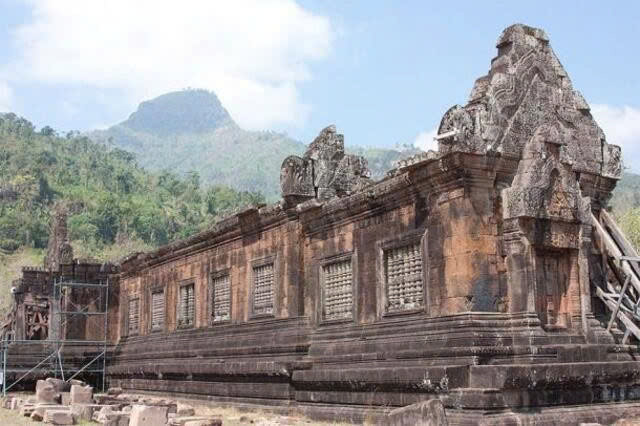
Nestled against the sacred slopes of Phu Kao Mountain in Champasak Province, the Vat Phou Temple complex stands as one of Southeast Asia’s most remarkable archaeological treasures. This UNESCO World Heritage Site traces its origins to the 5th century, when ancient builders chose this location for its spiritual significance—the mountain itself was revered as Lingaparvata, the sacred dwelling of Shiva, representing the cosmic center of Mount Meru.
Khmer Architectural Mastery
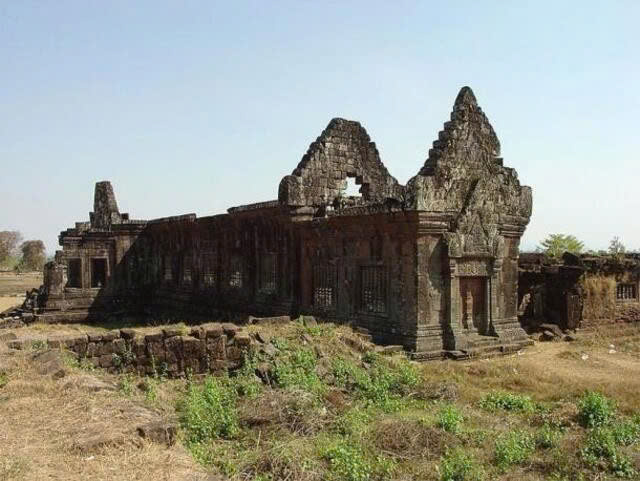
The temple complex reached its architectural zenith under the Khmer Empire between the 11th and 13th centuries. Master builders created an extraordinary pilgrimage route that begins at the mighty Mekong River and ascends through carefully planned terraces toward the mountain summit. This sacred pathway passes through twin water reservoirs called barays, representing the celestial oceans of Hindu cosmology, before reaching the magnificent North and South Palaces that guard the lower ceremonial grounds.
The journey culminates at the main sanctuary, perched dramatically 75 meters above the river valley. Here, a natural spring was ingeniously channeled to flow through the temple, continuously purifying the sacred linga stone—a testament to the sophisticated engineering and deep spiritual understanding of its builders.
The Mysterious Crocodile Stone: Ancient Enigma
A Unique Archaeological Wonder

Among Vat Phou’s many treasures, none captures the imagination quite like the Crocodile Stone. This remarkable boulder, positioned strategically near the upper temple terraces, bears a deep natural impression that strikingly resembles a crocodile in repose. What makes this artifact truly extraordinary is the precisely human-sized cavity carved into its surface—a feature that has sparked countless theories about its original purpose.
Legends of Ritual and Sacrifice
Local oral traditions, passed down through countless generations, speak of dark ceremonies performed during the ancient Chenla Kingdom era. These stories tell of annual rituals where rulers would seek divine favor from mountain spirits, offering precious rice wine alongside more somber tributes—young maidens selected for their beauty, sacrificed when the frangipani blossoms began their seasonal fall.
Historical validation for these legends comes from unexpected sources. The ancient Sui Chronicles, compiled by Chinese scholars in the 6th century, document similar ritual practices in Chenla culture, describing ceremonies dedicated to Bhadreshvara—a powerful manifestation of Shiva. However, these historical accounts place such ceremonies atop Phu Kao Mountain’s summit, rather than at the mysterious stone below.
Archaeological Puzzles and Scholarly Debate
The Search for Evidence
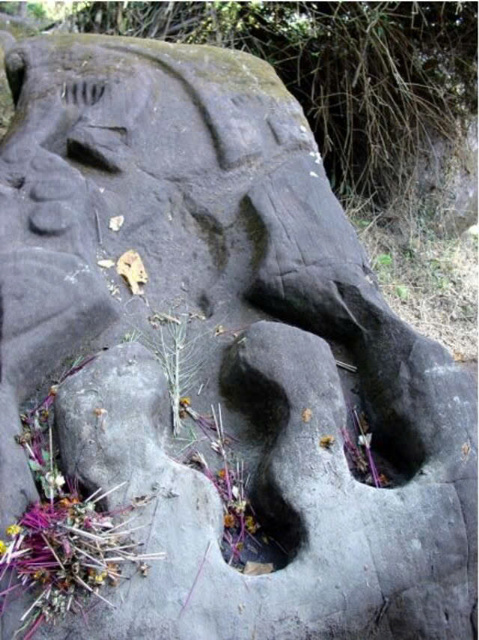
Despite the compelling legends surrounding the Crocodile Stone, archaeologists face a frustrating lack of concrete evidence. No similar artifact has been discovered anywhere else in Laos or Cambodia, making this stone a unique anomaly in the archaeological record. The absence of crocodile symbolism in Chenla and Khmer religious traditions further complicates efforts to understand its significance.
Modern researchers propose alternative theories—perhaps the stone served as a ceremonial altar for less dramatic rituals, or maybe its distinctive shape held symbolic meaning now lost to time. Without extensive excavation and analysis, the stone’s true purpose remains tantalizingly out of reach.
Preservation Challenges and Future Discoveries
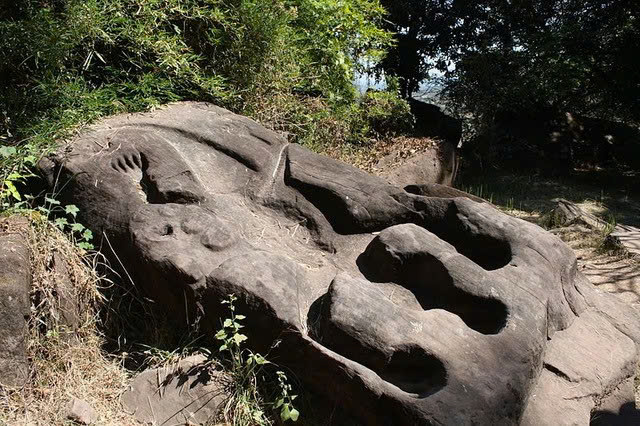
The mystery deepens when considering that only a small fraction—approximately 5%—of the Vat Phou complex has been systematically excavated. Vast areas of the site remain buried beneath centuries of accumulated earth, potentially hiding crucial clues about the Crocodile Stone’s role in ancient ceremonies.
Modern threats compound these research challenges. Infrastructure development, including highway construction, has already disturbed parts of the archaeological site. The lack of comprehensive restoration efforts means that many secrets of Vat Phou, including the truth about its enigmatic Crocodile Stone, may remain buried indefinitely.
Video
From Hindu Temple to Buddhist Sanctuary
Cultural Transformation
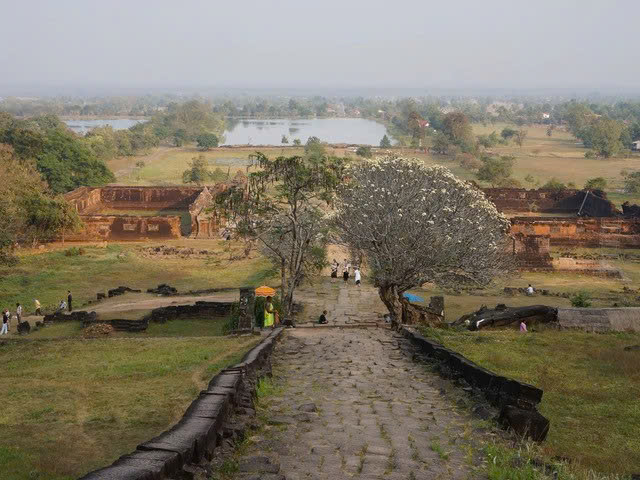
Following the decline of the Khmer Empire, Vat Phou underwent a remarkable transformation during the 13th century, evolving from a Hindu ceremonial center into a Theravada Buddhist monastery. This transition marked not the end of its spiritual significance, but rather a new chapter in its sacred history.
The establishment of the Kingdom of Lan Xang in the 14th century further cemented Vat Phou’s importance as a regional pilgrimage destination. Today, the site continues this tradition through the annual Vat Phou Festival each February, drawing thousands of pilgrims and tourists who come to experience its enduring spiritual power.
The Enduring Mystery
A Testament to Ancient Wisdom
The Crocodile Stone remains Vat Phou’s most captivating enigma—a silent sentinel that bridges the gap between historical fact and mythical legend. Whether it once served as an altar for human sacrifice, a ceremonial platform for religious rituals, or held some entirely different purpose, its presence continues to inspire wonder and speculation.

As researchers work to unlock more of Vat Phou’s secrets, the Crocodile Stone stands as a powerful reminder of the sophisticated civilizations that once flourished in Southeast Asia. Its mysterious form invites us to imagine the ceremonies, beliefs, and daily lives of people who walked these sacred grounds over a millennium ago.
In an age where many ancient mysteries have been solved through modern technology and archaeological techniques, the Crocodile Stone of Vat Phou remains beautifully, stubbornly enigmatic—a tangible connection to the spiritual depths and architectural genius of our ancestors, waiting patiently for its secrets to finally be revealed.

